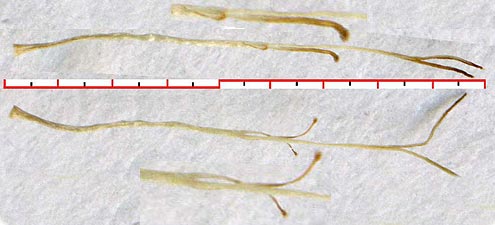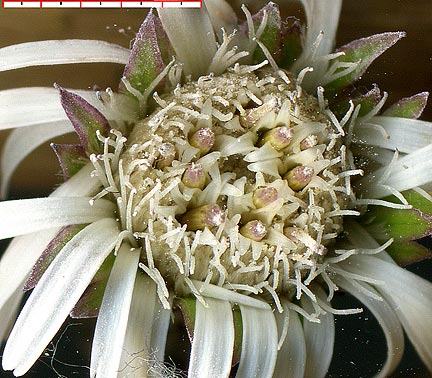 |
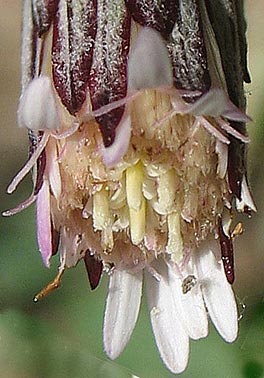 |
| C. texana with eligulate floret style branches exerted.
[Click to enlarge.] |
C. carduacea with eligulate style branches barely visible. |
|---|

 |
 |
| C. texana with eligulate floret style branches exerted.
[Click to enlarge.] |
C. carduacea with eligulate style branches barely visible. |
|---|

Eligulate pistillate florets have short two–lipped (3–) 3.5–5.5 (–6.5) mm tubular corollas (roughly less than half the length of the style), just wide enough to enclose the lower portion of the style which rises from the achene apex. The style branches at the very top; style branches c. 1.5–1.9 mm.
Prior to dispersal the structure of these florets is generally well concealed within the pappus bristles. For this reason, most measurements were from post–dispersal florets. No attempt was made to adjust for shrinkage of the dry florets.
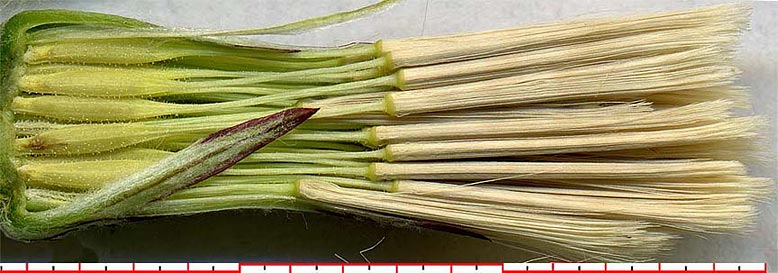
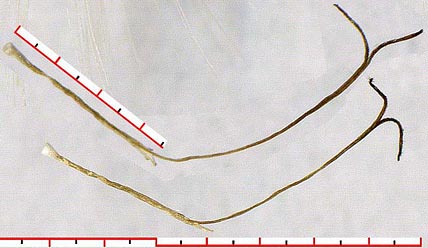

| percentage | totals | |
|---|---|---|
| C. texana | 57–63% | 54–62 |
| C. carduacea | 47–60% | 17–50 |
| average length | range | |
|---|---|---|
| C. texana | 9.2 mm | 8.8–9.5 mm |
| C. carduacea | 10.5 mm | 9.9–11.2 mm |
| average length | range | % of floret length* | |
|---|---|---|---|
| C. texana | 3.6 mm | 3.1–3.8 mm | 38% |
| C. carduacea with visible ligules | 4.6 mm | 3–6.2 mm | 46.5% |
| C. carduacea with ligules not visible | 5.2 mm | 4.5–6.2 mm | 52.5% |
Two anomalous C. texana longer corollas were noted (shown below). The tube was over 4 mm, but most interesting were the two long lips of each floret, the longer lips, 1.7 & 1.8 mm; the shorter lips, 0.4 & 1.2 mm respectively; and each with a prominent tip similar to those occurring with the 5–lobed central florets. These have subsequently been interpreted as belonging to a separate floret type: peripheral long–tubular corollas.
